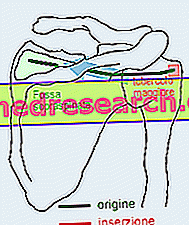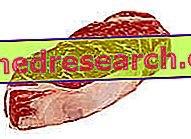What's this
What is blue stilton?
Blue stilton is a blue cow's milk cheese, from whole milk and pasteurized, typical English that takes its name from the homonymous village in which, in the XVIII century, it was produced for the first time.

There are two different varieties of stilton: white, more delicate and less intense, blue, strong both in smell and taste - due to the presence of mold inside.
Blue stilton - like the white one - enjoys the recognition of Protected Designation of Origin assigned to it by the European Commission (CE). On the other hand, this award is tied to specific production requirements, including the geographical area that defines the cheesemaking area. Blue stilton can be obtained only within the counties of Derbyshire, Leicestershire and Nottinghamshire, according to a meticulously established procedure.
Did you know that ...
Due to the narrowness of the PDO specification, the cheese produced in the village of Stilton - being today in Cambridgeshire - can no longer be marketed as Stilton cheese? In 2013 the "Original Cheese Company" applied to modify the specification to include the area; the request was rejected.
Source of high biological value proteins, specific vitamins and minerals, blue stilton is a product that belongs to the II fundamental group of foods. It is considered very caloric and provides considerable amounts of fatty acids, cholesterol and histamine.
Blue stilton is consumed mainly as a table cheese but there are also local and international recipes that involve its use, above all loose.
Did you know that ...
White stilton is an almost identical cheese; unlike blue, it does not contain the Penicillium roqueforti mold, responsible for the typical dark veins. It is a cheese with a crumbly consistency, now widely used as a base to be enriched for sweet recipes - you can add fresh or preserved ingredients such as apricot, ginger, citrus fruits, grapes, etc.
Nutritional Properties
Nutritional properties of blue stilton
Blue stilton, as a dairy product, belongs to the II fundamental group of foods.
It has an energy supply and a very significant level of fats, which increase as the aging period expands - the lipid percentage does not fall below 48% on the dry substance, or 35% on the edible part.
Calories are mainly supplied by fatty acids, followed by proteins (23%) and, possibly, very few carbohydrates - only in poorly seasoned forms. The lipid chains are mainly saturated, the peptides with high biological value - they provide all the essential amino acids in the right proportions and quantities with respect to the human protein model - and any soluble / simple carbohydrates - lactose disaccharide.
Blue stilton does not contain fibers; it is instead rich in cholesterol. By increasing the curing it dehydrates, the lactose is degraded by the bacterial microflora and increases the concentration of histamine. The quantity of purines, as for the other foods of the same food group, is rather limited. Does not provide gluten.
The vitamin profile of blue stilton is characterized by its abundance in riboflavin (vit B2) and retinol or equivalent (vitamin A and / or RAE). Many other water-soluble group B factors such as thiamine (vit B1) and niacin (vit PP) are fairly concentrated. With regards to minerals, on the other hand, the cheese shows significant concentrations of calcium, phosphorus and sodium.
Diet
Diet and blue stilton cheese
Blue stilton, being a very caloric and high-fat food, does not lend itself to the weight loss diet against overweight - which should be low-calorie and normolipidic.
The prevalence of saturates on the total fatty acid profile and the abundance of cholesterol make blue stilton unsuitable for hypercholesterolemia.
Containing high biological value proteins, blue stilton can be considered an excellent source of essential amino acids. It is recommended in all circumstances that require increasing the intake of these nutrients; they are indicative examples: general, specific malnutrition, chronic malabsorption and increased needs - for example during pregnancy or by practicing extraordinarily intense and prolonged sports. However, the use of cheese as a nutritional source of high biological value proteins / essential amino acids is limited by its less desirable properties which require moderate portions and a low consumption frequency to ensure a balanced diet.
Lactose, in itself scarce due to lactic fermentation, can still be annoying for the most sensitive intolerant; on the other hand, statistically speaking, adverse reactions to seasoned blue stilton can be considered very rare. An increase in the concentration of histamine is to be reported, especially in the more aged forms, which makes it inappropriate in the case of specific intolerance. Free of gluten and poor purine, it is instead pertinent to the diet against celiac disease and hyperuricemia.
Given the wide range of water-soluble vitamins of group B, which mainly perform the task of cellular coenzymes, blue stilton can be considered a useful food to support the metabolic processes of various tissues. In blue stilton, the liposoluble vitamin A and / or equivalents (RAE) abound, necessary to maintain the visual function, reproductive capacity, cellular differentiation, antioxidant defense, etc., intact.
Given the high percentage of sodium, blue stilton should be avoided or strongly limited in the preventive and / or therapeutic diet sodium hypertension.
The richness of calcium and phosphorus is a very useful feature to ensure the balance of skeletal metabolism, a very delicate process in fetal development, in the growth phase of the child and in the third age - due to the tendency to osteoporosis. Notes : it is good to remember that for the health of the bones it is necessary to guarantee a correct intake of vitamin D or adequate sun exposure.
In pregnancy, for hygienic reasons, it is advisable to avoid blue stilton; all the blue products are in fact considered to be at greater risk of contamination by Listeria monocytogenes . By cooking the cheese very carefully, for example in cooking recipes, the risk is drastically lowered but it is advisable to avoid it.
Blue stilton cheese is not allowed in the vegan diet. Due to the presence of animal rennet, it must also be excluded in the vegetarian one. It has no contraindications for the Muslim and Jewish religions. The opinions of observant Buddhists are conflicting in this regard.
The frequency of consumption of blue stilton cheese - as a dish - is less than or equal to 1-2 times a week, while the average portion corresponds to about 80 g.
Kitchen
Blue Stilton in the kitchen
Blue stilton is consumed mainly as a table cheese, in the role of appetizer, dish or dessert, often accompanied by vegetables, sweet fruits and oil seeds such as celery, pears and walnuts.
Many people like it as a condiment - or as a reinforcing ingredient - in first courses, such as vegetable soups and in particular celery and / or broccoli cream (past or velvety). In Italy, it could be associated with any first course that normally contains gorgonzola; some examples are: sauces for gnocchi or pasta - with walnuts, pine nuts, radicchio, pears, raisins etc. - sauces for meat - as in France, to accompany grilled fillets or tagliate - sauces for appetizers - such as pumpkin pie from Ferrara etc.
Alternatively, blue stilton can be accompanied by common bread or the like, such as crackers, savory biscuits, breadsticks, croutons, etc .; in Italy, it could be associated with polenta - both with a spoon or with toasted slices - with breadsticks, etc.
Some vegetable salads, not really light, contain chopped blue stilton and other ingredients such as boiled or sauteed meat, legumes, cereals etc.
As for the wine pairing, blue stilton is traditionally accompanied by barley wine - literally "barley wine", which however is the name of a typical British top-fermented beer - or a Portuguese Port fortified wine. Some prefer the association with Sherry - fortified wine from Jerez de la Frontera, in Andalusia, Spain - or with Madeira wine - a fortified wine from the Portuguese island of Madeira.
It is still in use - albeit limited to some places - the rather crude practice of digging the form of blue stilton and filling the hole with Port wine. The mixture of wine and cheese would then be consumed as a food-drink. This association, today mostly deprecated, has been marketed as a sauce in airtight packs similar to those of toothpaste.
Blue stilton is consumed in large quantities over the Christmas period. Unlike other dairy products such as Edam or Port-Salut, this cheese has a perfectly edible rind that forms during the maturing process.
Curiosity
A 2005 survey by the British Cheese Board reported that, in 75% of men and 85% of women, the consumption of 20 g of stilton half an hour before bed correlated with unusual dreams, defined as "strange and vivid. "
Features
Characteristics of blue stilton
To be called "blue stilton", the cheese must have the following requirements and characteristics:
- Produced exclusively in the counties of Derbyshire, Leicestershire and Nottinghamshire, from local pasteurized milk before use. Note: in periods of high commercial demand, milk can be purchased from all over England and Wales
- It is not pressed
- Have the traditional cylindrical shape
- Form a crust or natural, thin, sometimes variable and mottled rind
- The dough must be crumbly, without holes and uniform, except for the bluish or greenish veins that branch out from the center of the shape towards the outside. The ripe or vintage is instead of a creamy consistency.
- Having typical organoleptic and taste characteristics of blue stilton
- Contain at least 48% fat - milk - in the dry substance
- Contain about 35% fat and 23% protein in the edible portion
Note : the mature or vintage blue stilton is more aged - seasoned - ripe than the common one.
Cheeses similar to blue stilton
There are other blue cheeses similar to blue stilton. These have the typical blue veins and have the typical taste and aroma of saprotropic mushrooms such as Penicillium roqueforti and Penicillium glaucum .
For example, stichelton is made in the same way as stilton and uses cow's milk from a single county - Nottinghamshire; unlike blue stilton, it is based on unpasteurized milk and therefore cannot use the PDO.
Since this recognition came into force, some British distributors of blue cheese - apparently identical to stilton - have begun to define these products with the generic term "British blue cheese". Certain manufacturers have changed nomenclature.
Other examples of blue cheese (blue) are: gorgonzola (Italian) - from cow's milk - fourme d'ambert from Auvergne (French) - from cow's milk - and roquefort (French) - from sheep's milk.
Production
Blue stilton production
Blue stilton production begins with milking and collecting whole cow's milk. This is then pasteurized and placed in special vats. A culture of mesophilic bacteria ( Lc. Lactis ) is then inoculated at a temperature of 21 ° C, the mold ( P. roqueforti ) required for the veins and rennet. Coagulation takes place at 30 ° C; the curd is suitably broken roughly to facilitate the expulsion of the serum. Then the salt is added in a measure of 2.5%. The following day the curd is broken and cut into pieces, then placed in walnut baskets. The forms, having become such, are salted outside. At this point, in a temperature and humidity controlled environment, the maturation begins, during which the drilling is done with stainless steel needles to allow the infiltration of air and allow the molds to replicate creating the greenish blue veins. Maturing lasts 2-3 months on average - it varies from normal blue to "mature" or "vintage" blue.
Birth and Protected Designation of Origin
The birth of blue stilton (1720), in its current form and characteristics, is attributed mainly to Frances Pawlett (or Paulet), an expert Wymondham cheese maker.
The producers of stilton cheese have requested and obtained - in 1996 - the recognition of protected designation of origin (DOP). As anticipated, according to the disciplinary, in order for the cheese to be called "stilton", it must be based on local and pasteurized cow's milk, and must necessarily be produced in one of the three counties of Derbyshire, Leicestershire, Nottinghamshire. In September 2016, only six dairies were allowed to produce stilton.
The typical veining of blue stilton is induced by piercing the cheese's crust during aging with stainless steel needles, allowing the air to penetrate to the heart of the food. The whole process, including maturation, takes about 2-3 months.



